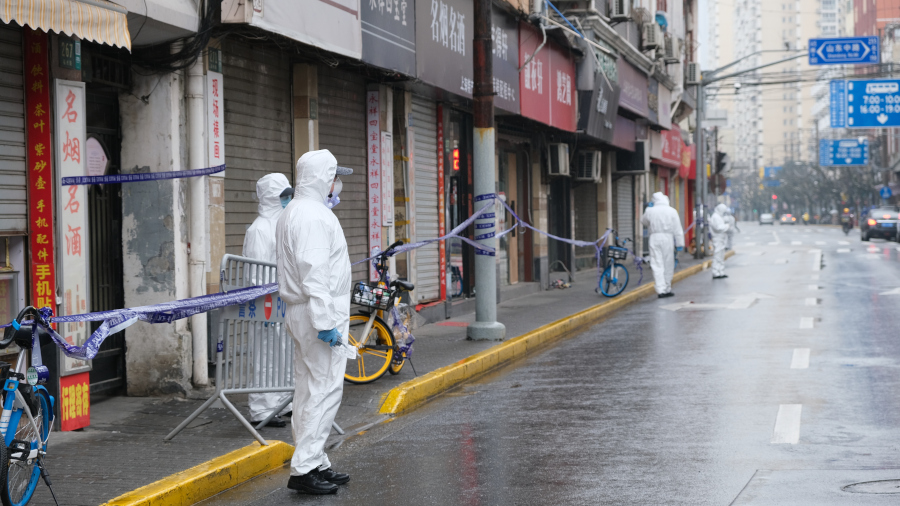Music alliviates collective grief
In February 2020, a group of musicians from around the world living in China recorded their cover of a song by Michael Jackson on video to express their support to the families affected by the COVID-19 pandemic and to those working in the frontline. The video went viral. Now, in a study conducted by the Department of Psychiatry and Forensic Medicine and by the Institut de Neurociències (INc-UAB) at the UAB, researchers analyse why the video and song had such a profound effect.

At the start of 2020, the SARS-CoV-2 virus seemed to be a distant problem for most countries. Nevertheless, the virus was becoming epidemic in China and its population was going through very difficult times. It was then that a group of musicians working for the company Shenzhen Meifeiya Culture Communication Co. Ltd. in Shenzhen, China, used a profile of the Shenzhen Daily newspaper on WeChat, a social network with 1.2 billion monthly active users, to upload a video with their cover of “You Are Not Alone” by Michael Jackson. The video focused on isolation and overcoming great obstacles, and at the same time aimed to offer encouragement the people of their second home, China, by sending out a message of positivity and hope.
Now, in a study published in the journal Behavioral Sciences, Lydia Giménez-Llort, professor of the Department of Psychiatry and Forensic Medicine and researcher at the INC-UAB, analyses how the music, lyrics and images in the video combine to show empathy and transmit a message of support to the citizens of Wuhan in a way that moves viewers. “When I saw the video I felt profoundly moved. I connected with the suffering of the people in China and of the musicians, because of their expressions and the striking images of the hospitals, ambulances and empty streets”, says Dr Giménez-Llort.
Collective mourning is an expression of the maturity, cohesion and respect existing within a society. The objective of this study was to identify the specific traits that allow empathising so well with those experiencing personal and collective grief, feel the comprehension of others, and evaluate individual and social resilience tools. In short, to understand how the elements deployed in the video recording of the song served to alleviate a collective traumatic experience.
Positive psychology, music and songwriting are non-pharmacological strategies which can be of great value in regulating emotions and thoughts, particularly in moments of sorrow and difficulties. “They made a cover of a ballad, a type of romantic song asking a question in one verse and answering it in the next. And of all the ballads, they chose “You Are Not Alone”, which describes the incomprehension of someone who has lost their loved one and who, as the days go by, feels the unbearable weight of solitude, despite being surrounded by people. Therefore, there is a great similarity between the original song and the situation in Wuhan, a city which stood alone as it faced the explosion of the epidemic, while the rest of the world closed off its borders and could do little more from a distance. But its main value lies in the fact that the version for China redimensions this emotional suffering at a social level and accompanies it with answers that point to several elements of social strength and resilience. And it is done through the voice of foreigners who feel that China is their adoptive country, and includes the participation of Chinese children as an element of purity and hope for the future. Thus, the person listening to the song feels the comprehension of others and realises that not only do they have external support, but they are also innerly and collectively very strong, they are not alone”, says Dr Giménez-Llort. At the same time, the video plays with changes in rhythm (different angles, length of shots, etc.) and non-verbal communication in order to strengthen the empathy with which the situation is described and the message of support that is transmitted.
With regard to the lyrics, the researcher was able to identify elements of typical mourning processes, such as the five stages described by Kübler-Ross (denial, anger, bargaining, depression, acceptance), the dual process model by Stroebe and Schut (switching back and forth between loss and restoration), Bronfenbrenner’s bioecological model of human development (redimensioning individual experiences into social ones), and Taylor’s tend-to-befriend model (which describes how women within a social structure face problems or moments of stress by seeking short and long-term social support and attention).
Finally, the study also analyses other musical events occuring around the world and memorable songs reformulated during the pandemic which played an important role in creating social cohesion during moments of self-isolation and bereavement. This study showcases the role of music and other art forms, which through our emotional and social brains can help us cope individually and collectively with sudden and dramatic situations, thereby alliviating physical distance and human suffering, and reaching beyond any cultural barriers.
The study is included in a Special Issue dedicated to “New Psychological Perspectives on Death and Dying—between Normality and the COVID-19 Emergency”, edited by Associate Professor Dr Inés Testoni, who is internationally renowned for her “Death Studies & End of Life” programme at the University of Padua, Italy, and at the University of Haifa, Israel.
Video:
Reference:
Giménez-Llort L. “You’re Not Alone for China”: The First Song in Times of COVID-19 to Keep the Faith in a World Crying in Silence. Behav Sci (Basel, Switzerland) [Internet]. 2022 Mar 24 [cited 2022 May 19];12(4):88. https://cutt.ly/article190522